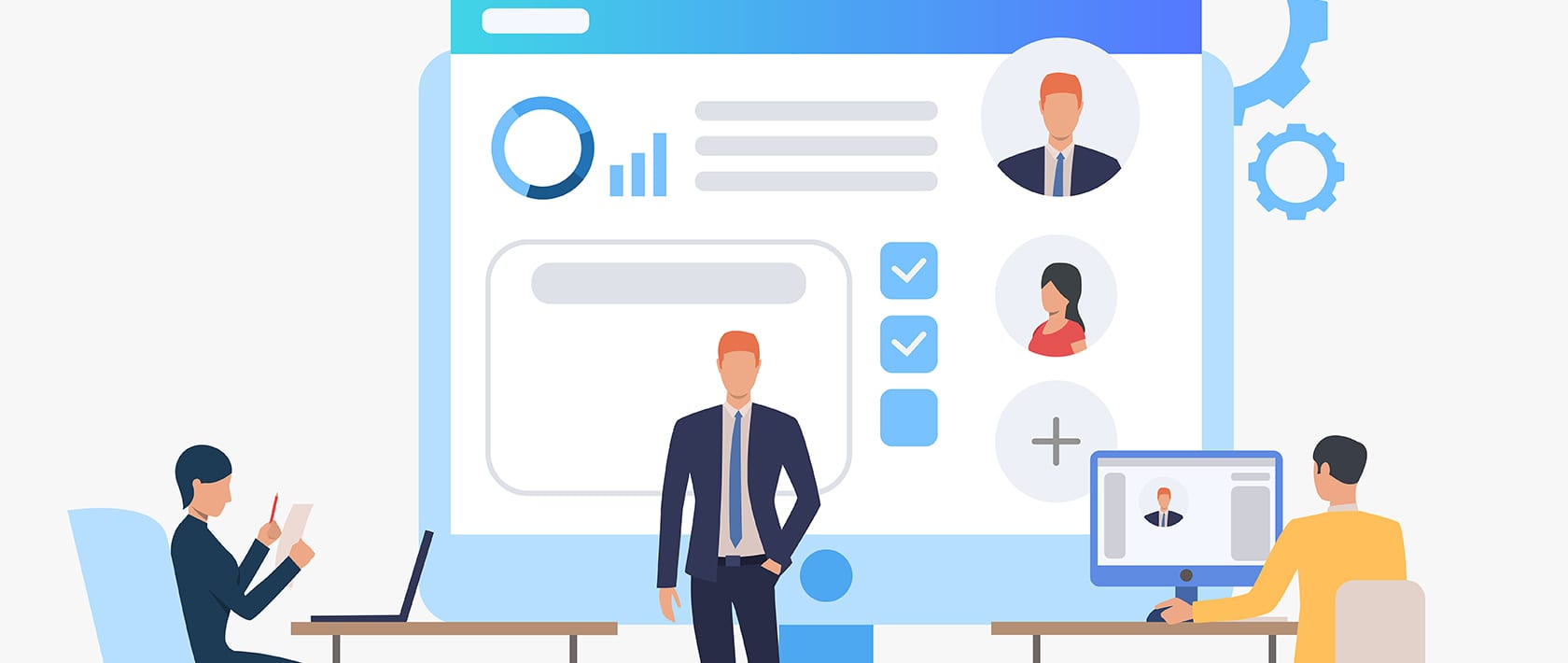We live in an era of all things ‘digital’. Technology is impacting every facet of human and business life. Organisations are pouring significant financial outlay into technology to improve all aspects of the business. Businesses are either embarking on digital transformation journeys or are en-route.
Each function within a business is impacted by the digital transformation initiatives being ushered down from the board and leadership levels of the organisation. Just as all business units are benefiting, investments in Human Resources (HR) technology are on the increase. Traditionally, HR, as a function, was seen as ‘soft’, even ‘fluffy’. It had a reputation that often divided the workforce. Often the value that HR was providing was not quantifiable. HR was not generating revenue at the frontline (like Sales does) or delivering the core service (like Operations). But these are outdated perceptions of HR. What was once a function that was measured on gut feel alone, can now be robustly measured using HR Analytics.
HR analytics is about having a data-driven approach to managing the HR function. Summarily, HR Analytics is about ‘people’ data. HR Analytics serves to answer questions such as:
- What is the organisation’s employee turnover?
- What are the predictive indicators of an organisation’s employee turnover?
- What is the reward differential between high performers and average employees?
- What is our Total Cost of Workforce as a percent of revenue?
- What is the cost of turnover for our business?
While HR execs, managers and frontline have access to a wealth of data, how well they put it to use determines the success of their strategy. It also enables the business to make better, and more strategic decisions, which in turn has a significant impact on the bottom-line.
HR Analytics is a data-driven approach to the strategic planning of the workforce and its execution. It helps leverage the raw data and resultant information to measure performance and finetune the play. HR analytics provides critical insights for effectively managing employees to create enhanced operational efficiencies for a business. The insights, amongst several other data points, include information on training initiatives, year-on-year attrition monitoring, compliance, diversity reporting etc.
Imagine, as an HR professional, being able to demonstrate to the business leadership, how employee engagement has affected bottom-line over the last FY. Or how learning programs have positively impacted staff retention. Imagine being able to predict employee turnover, assess causalities and relationalities to put measures in place to reduce the rate of turnover.
This is the ability that HR Analytics provides an organisation. It can help achieve business goals and others critical to strategic planning. Mature analytics practices can link HR decisions to business results, which means HR can play a more central role in strategic business conversations.
Historically, the HR department was perceived as archaic with outdated processes. The advent of workforce intelligence has swiftly changed that perception. HR functionality is now becoming digital and is playing a pivotal role in the overall business strategy. Modern businesses recognise the importance of HR analytics and the role that HR Analytics plays in workforce management.
If your organisation is in the early phases of an HR analytics journey, here are a few steps to assist you commence or progress your journey:
Set Goals

The most crucial and significant step in commencing an analytics journey is to set goals. What you are trying to achieve should drive the entire play. What you are trying to drive from the data analysis must be aligned to the goals you start off with. In the absence of clear goals, HR analytics plays almost always fail or don’t deliver expected results.
Have a clear plan of action
Once the business goals have been established, and the HR Analytics goals have been aligned with the business goals, a clear and concise plan of action must be set in place. What precisely are you trying to achieve with your data analysis? Which HR technologies will need to be in place? Which skills will be needed within the HR team or by the HR team to maximise the opportunity? What other systems and technologies will the HR team need access to? Which tools will be required for accessing and analysing the data? Having comprehensive responses to questions such as these will help lay the foundation for a robust plan of action.
Always begin with ‘data’
For an HR team to add real and measurable business value its output must contribute to the core business goals. HR must aid in achieving competitive advantage, delivering to the bottom-line results etc.
A highly strategic and centralised HR unit bases its execution on data. Adhoc plays involve executing on the HR mission in a chaotic manner, often missing the mark. Where, strategic, well planned and strongly developed HR plays are based on data-backed analysis and decision making. To commence an HR Analytics journey, organisations must start with the fundamental building block of Analytics; data.
Create a single repository for data
Employee data is often kept at disparate sources and on various systems, i.e. paper records, excel spreadsheets, etc., usually collated as part of a tick-box exercise. A centralised HR department stores critical employee data in one place, on one central system which is accessible to anyone in the business. The data allows the company to operate holistically, with consistency, focusing on long-term business objectives.
A single source for employee data, consolidated at one centralised HR team:
- Lowers operating costs;
- Has its concentration of skills accessible to managers from one place;
- Promotes knowledge sharing; and
- Employee data optimises the HR processes.
A centralised HR team, with data-driven decision-making using workforce intelligence, is a pivotal single-system solution. For such workforce tools to work efficiently, employee data needs to be consolidated and consistent. Meaning gathering all the data from different sources so the team can merge it in a single location. Time-consuming, error-prone scattered manual processes run the risk of non-compliance and escalating labour costs. The right, centralised data-driven system helps the business unify while providing critical insights for decision-making. Integration of employee data is a vital kick-off point, as united data powers more meaningful outcomes. Analytics is not just a data-gathering initiative. It is the process of extrapolating such data into understandable information, turning such information into relevant insights, and converting such insights into actions. Doing this is the first step in the HR analytics journey.
Expand data sources to add value
Most organisations are executing on HR analysis of some sort. The goal must be to assess where precisely your HR strategy is. Organisations must then include in the mix, all relevant and value-adding data sources, so the goals set, can be reached. For instance, take the case of an organisation wanting to gauge how well its LinkedIn or Seek hiring program is performing. If the data source is limited to LinkedIn or Seek’s analytics, then the analysis an organisation can conduct would be limited to one or two data sources. However, if more data sources were taken into account, such as emails received as a result of the campaign, a more holistic version of campaign success is arrived at.
Connect data sources

The goals you set will determine how broad your data play should be and how deeply you should dive into it. Organisations must take a deep view of their HR data.
The focus must be strongly tuned to HR data. This serves as the foundation. Organisations must then connect the core HR data to functional data from other functional units. This allows for more holistic and robust decision making.
Regardless of whether the data is stored on-premises or in the cloud, the technology being leveraged should help convert data to insights, and these insights should allow for better decision making.
The data should be connected such that the workforce can drill down into complex data and conduct in-depth analysis. The technology must allow for the simplification of data into easy-to-digest reports, visualizations, and dashboards.
Set up an HR dashboard
Talent acquisition and retention, employee feedback and continuous performance management are some of the critical areas in which HR tools create efficiencies. As the HR function becomes more involved in the executive layer of leadership, the role of HR continues to evolve. With this growth comes even more expectations for providing reliable data on key HR metrics. Accurate and up-to-date data is, therefore, pivotal. The second step in the HR analytics journey is the creation of an HR dashboard.
An HR dashboard with key performance indicators can align perfectly with the overall strategy of the organisation. It is crucial to measure the metrics that align with the goals of the business.
Here are some tips to consider when setting up an HR dashboard:
- Drill down on the most important metrics to measure;
- Monitor data that is meaningful and actionable;
- Measure the metrics which are the solutions to real organisational issues.
An HR dashboard is meant to drive action. It is a progress report made visual, allowing the business to make crucial decisions based on business intelligence. With an HR dashboard, you can:
- Compare performance against KPIs;
- Receive alerts of potential performance, regulatory and compliance issues and budget concerns; and
- Proactively mitigate problems and implement plans to future-proof the business.
In this era of data-driven results, creating a personalised dashboard is imperative as leaders have subjective opinions about analytics and what is essential. Through data, organisational leaders can quickly analyse what is relevant and vital to them and make evidence-based solutions.
Develop analytical capabilities
Big data is rapidly becoming a frequently used phrase in the human resources function. It is imperative that HR practitioners know how to leverage big data and demonstrate real value to the business. However, knowing whether your HR team has the necessary HR analytics0 skills is a step further along. Before beginning a journey towards workforce intelligence, it is essential to know where your organisation sits in terms of skills and capabilities.
Building a robust HR analytics team involves assessing competencies and gauging for a diversity of skill sets. The skills needed for an analytically-driven team is critical thinking, problem-solving, and business knowledge. Additionally, team members need to have consulting, statistics and research expertise. A constant state of curiosity drives the pursuance of in-depth data. Transitioning from reporting to HR analytics involves statistically analysing HR data to develop predictive models that enhance decision-making, allowing the business to make better people decisions in the future.
However, HR analytics is more than just cultivating the right capabilities. The human element is still relevant. There are intangibles wherever there are social interactions – like an employee’s history, professional ability, potential etc. Cultivating a relationship with employees to gather intangible data still means maintaining interpersonal relationships. The organisations of tomorrow understand this relevance because wanting to build better teams involves the right balance of data and humanity.
A point to consider is that there is enormous untapped potential within employees sitting outside of HR, often within marketing and finance teams. Developing the right analytical capabilities is a business-wide endeavour.
Identify areas where HR analytics can be applied
To get the best return on investment of HR analytics, the analytics must be linked with business outcomes. There must be empirical evidence of the connection between trends and the issues highlighted in business operations. Identifying the areas that have challenges is a crucial step in the analytics journey. The application of HR analytics is meant to solve such business challenges within every department to ensure that the use of analytics is consistent and aligns with the broader business objectives. You can apply HR analytics to the following areas:
- Recruitment and retention – analytics can establish which are the most productive recruitment channels, the reasons for absenteeism and attrition, and will be able to quantify how much these elements are costing the business.
- Productivity – measuring targets, employee performance feedback and goal-setting through data-driven metrics. Employees will have measurable KPIs to find their key strengths and weaknesses, thereby enhancing productivity.
- Employee engagement – assessing corporate culture, time and attendance management and learning and development opportunities.
- Remuneration: often the most significant business expense and the least analysed. Analytics can establish the percentage of high-performers who resign for compensation-related reasons.
- Benefits – identify which services aren’t being used and add more value to employees, giving them the benefits that they want.
Each business has unique requirements. Real data allows firms to act in most impactful ways.
Monitor your HR analytics

The continuous monitoring of HR analytics is the final step in this journey as it’s the key to unlock future-growth potential. Knowing the inefficiencies, errors and risks that are compromising your business, allows business leaders to implement structures, policies and procedures to mitigate such risks. Invaluable data has the potential to transform your business and continuous monitoring of the measured data can be analysed to ensure it has delivered accurate results. The data then needs to be in a format which is easily understood, and which you can present across the business. Through the analysis and consistent monitoring of big data, HR leaders are allowed to implement strategies which serve to improve any issues, bringing an element of predictability which helps to:
- Improve business turnover;
- Streamline the organisation’s hiring process;
- Redesign retention methods to keep high-performers;
- Forecast risks and considers the best approaches to reduce such risks proactively;
- Forecast talent and predict whether recruits are likely to be a success.
When faced with major investment decisions, companies cannot afford to make decisions on gut-feelings or subjectivity. The workforce is an organisation’s most valuable asset and is also the costliest. Workforce intelligence is a symbiotic way of ensuring that the organisation and its employees are working towards mutually-beneficial operations. HR analytics offers the organisation a snapshot into the mechanisms of the business of people and its related functions, like hiring decisions, succession planning and career progressions. It also allows for the preparation of future business needs for talent, while gauging how performance ties in with retention.
Give your organisation a competitive edge, optimise operational efficiencies and save money with HR analytics.





